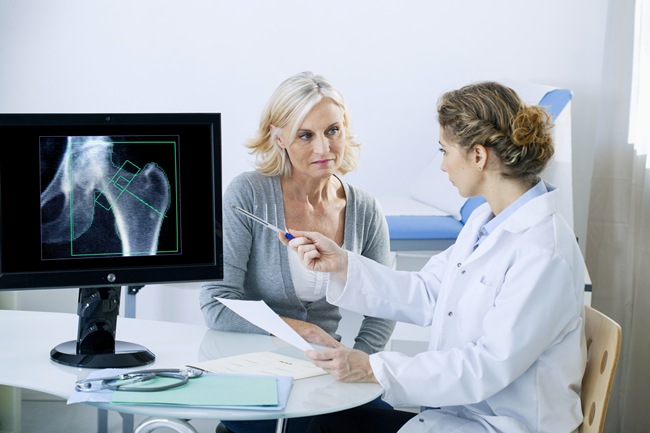Did you know that 10 million people in the United States currently have osteoporosis and 18 million more are at risk of developing the condition? The good news: You can take steps to protect your bone health.
The amount of bone mass in the body typically peaks by your mid 20s. That’s why it’s important to establish bone-friendly lifestyle habits in childhood. But even if you didn’t take care of your bones then, you can start now to minimize your risk of developing osteoporosis.
Just the facts
Osteoporosis is a condition affecting the bones, which occurs when the body either loses too much bone mass or didn’t build up enough in the first place. When a person has osteoporosis, bones become brittle and weak, and they are more likely to fracture.
While the condition is more common among women, affecting approximately one in two women age 50 or older, it is also occurs in men. Up to one in four men older than age 50 will develop osteoporosis.
Certain medical conditions and medications can make you more likely to develop osteoporosis. Talk with your doctor about whether you have a condition or are taking a medication that will increase your risk.
What to nosh for your bones
One step you can take to help prevent osteoporosis is to strengthen your bones through a healthy diet. A diet filled with nutrient-rich foods will help minimize bone loss.
You probably know about the positive effects of calcium, but it’s important to also get recommended levels of vitamin D, which helps the calcium absorb. Essential nutrients, including vitamins C and K and potassium, are also bone-builders.
Certain foods are particularly good for your bones:
- Dairy products (calcium)
- Fatty fish, such as salmon or tuna (vitamin D)
- Dark, leafy greens (calcium, magnesium, vitamin K)
- Broccoli (calcium, vitamin C)
- Spinach (magnesium, vitamin K)
- Tomatoes (magnesium, potassium)
- Peppers (vitamin C)
- Bananas (potassium)
- Sweet potatoes (magnesium, potassium)
While you want to load up your plate with those foods, there are certain other foods you want to eat in moderation. Limit your consumption of alcoholic beverages and caffeine, which have both been found to cause bone loss. Food high in sodium also cause bone loss, so limit yourself to no more than 2,300 milligrams of sodium per day — both from the saltshaker and in processed and restaurant-prepared foods.
The impact of physical activity
You know it’s a good idea to get regular exercise. But certain activities, called weight-bearing exercises, are particularly good for bone health. The key is that you’re on your feet!
There are a variety of weight-bearing activities to choose from, so you can find one that’s right for you whether you’re a regular exerciser or just beginning. Some examples include:
- Dancing
- Hiking
- Jumping rope
- Tennis
- Aerobics
- Walking
- Running
You also want to include strength training in your workout regimen. Incorporate activities where you move your body or a weight against gravity by lifting weights, using exercise bands or performing certain positions in yoga or Pilates.
If you have osteoporosis …
If you’ve been diagnosed with osteoporosis, you can still take steps to protect your bone health. Start with continuing to fill your plate with sources of essential nutrients such as calcium and vitamin D.
Your doctor may also prescribe oral or injectable medications to help reduce the risk of fractures. These medications will vary based on your gender, age and the severity of your osteoporosis, among other factors.
You can also lessen your risk of fracture by taking steps to prevent falls, both in your home and outdoors.
The experts at Erlanger Orthopaedic Institute can determine if you are at risk of osteoporosis, and may be able to help you prevent or slow the effects of this bone health disease. Learn more about the Bone Health Clinic here.






